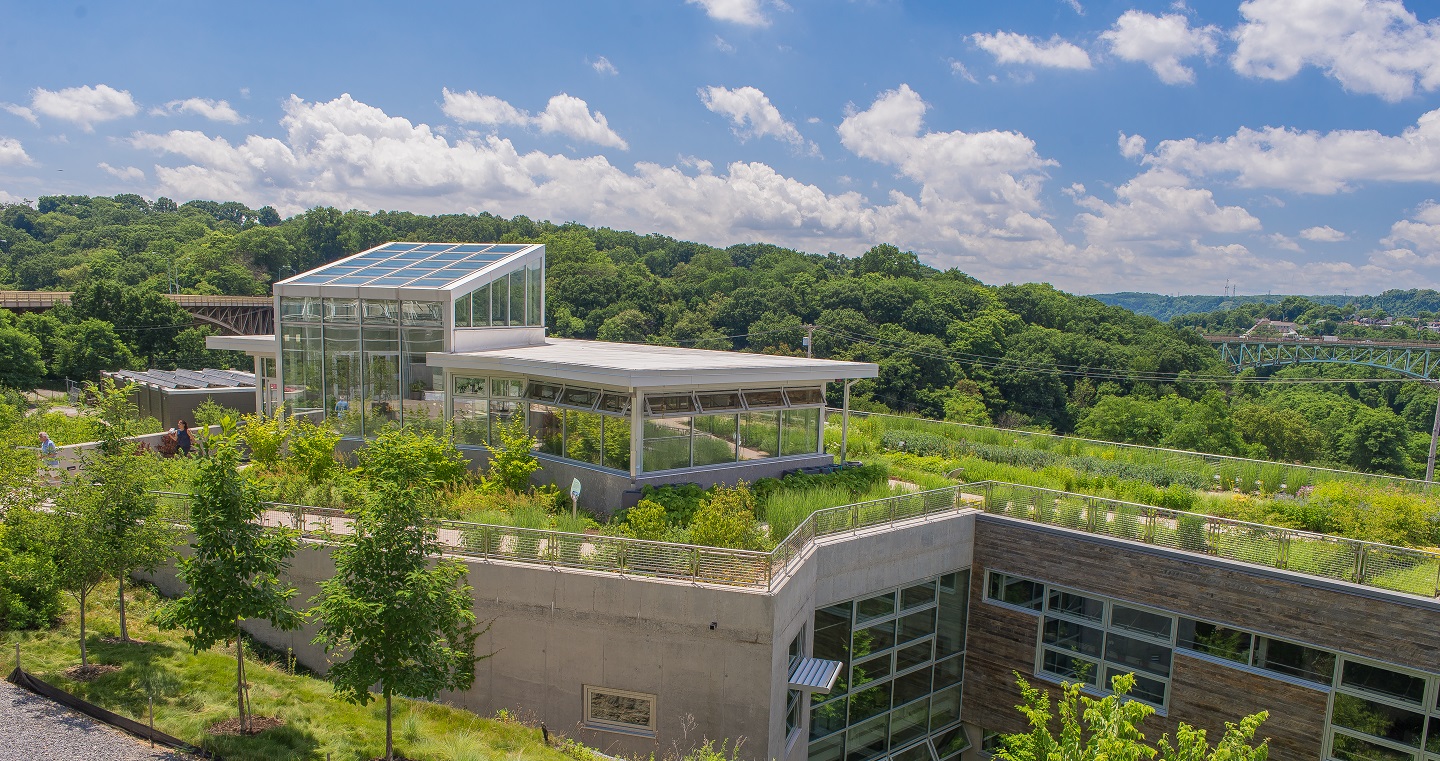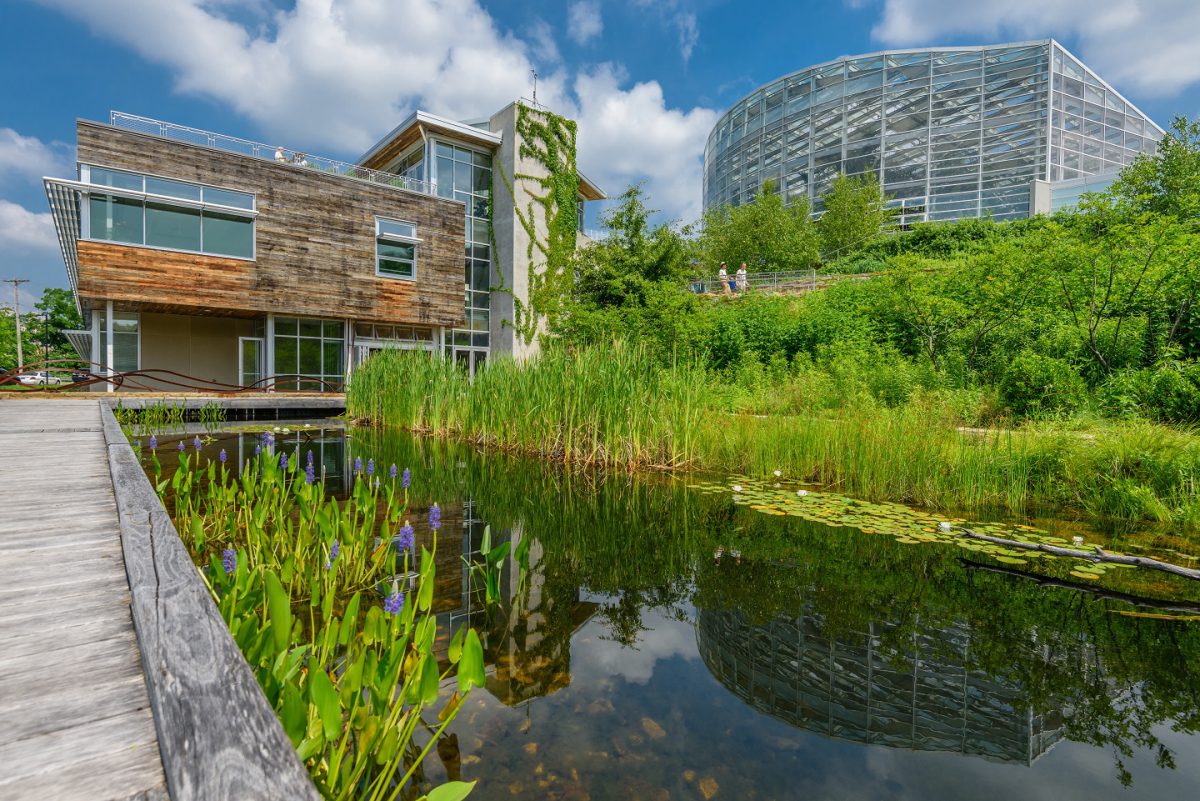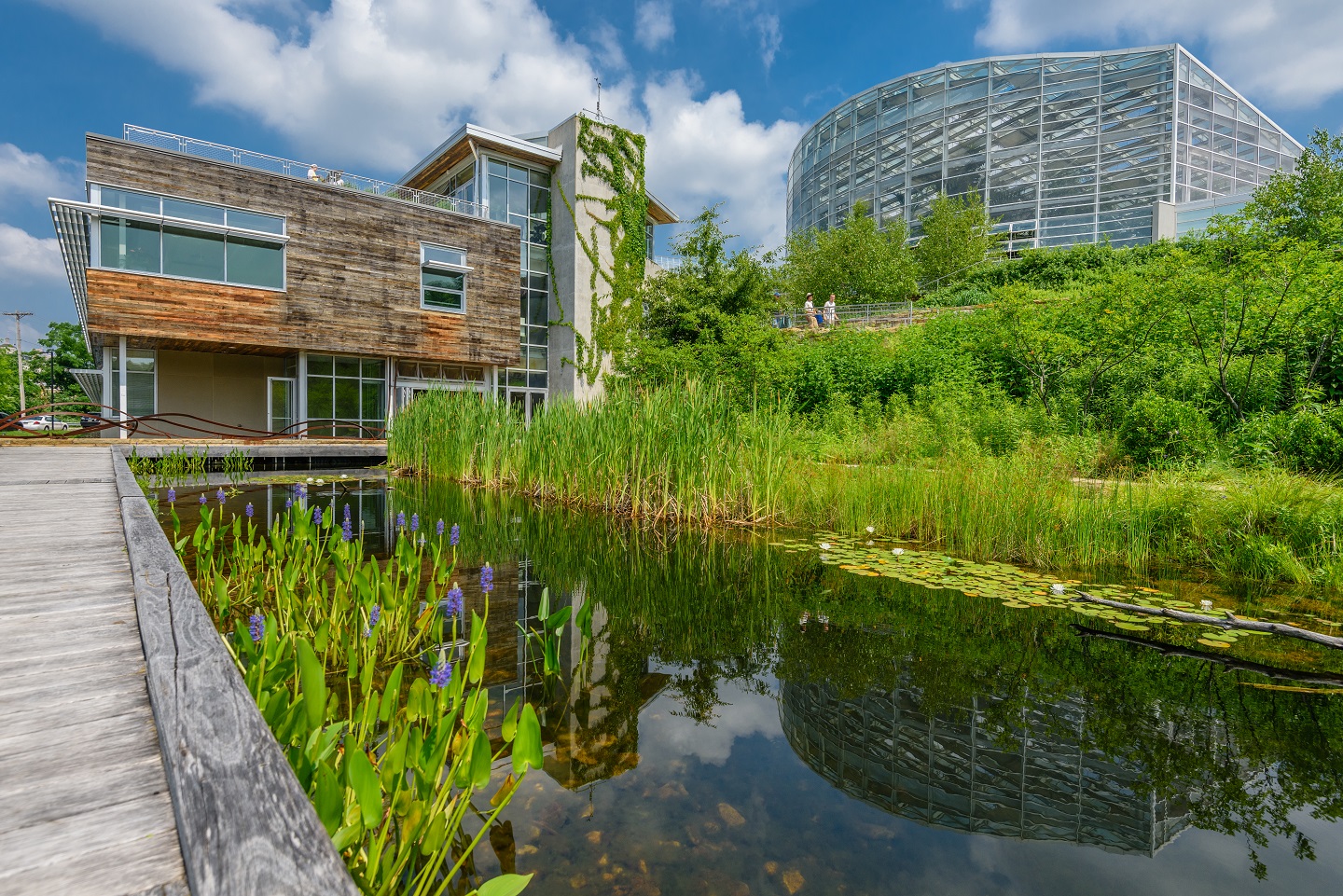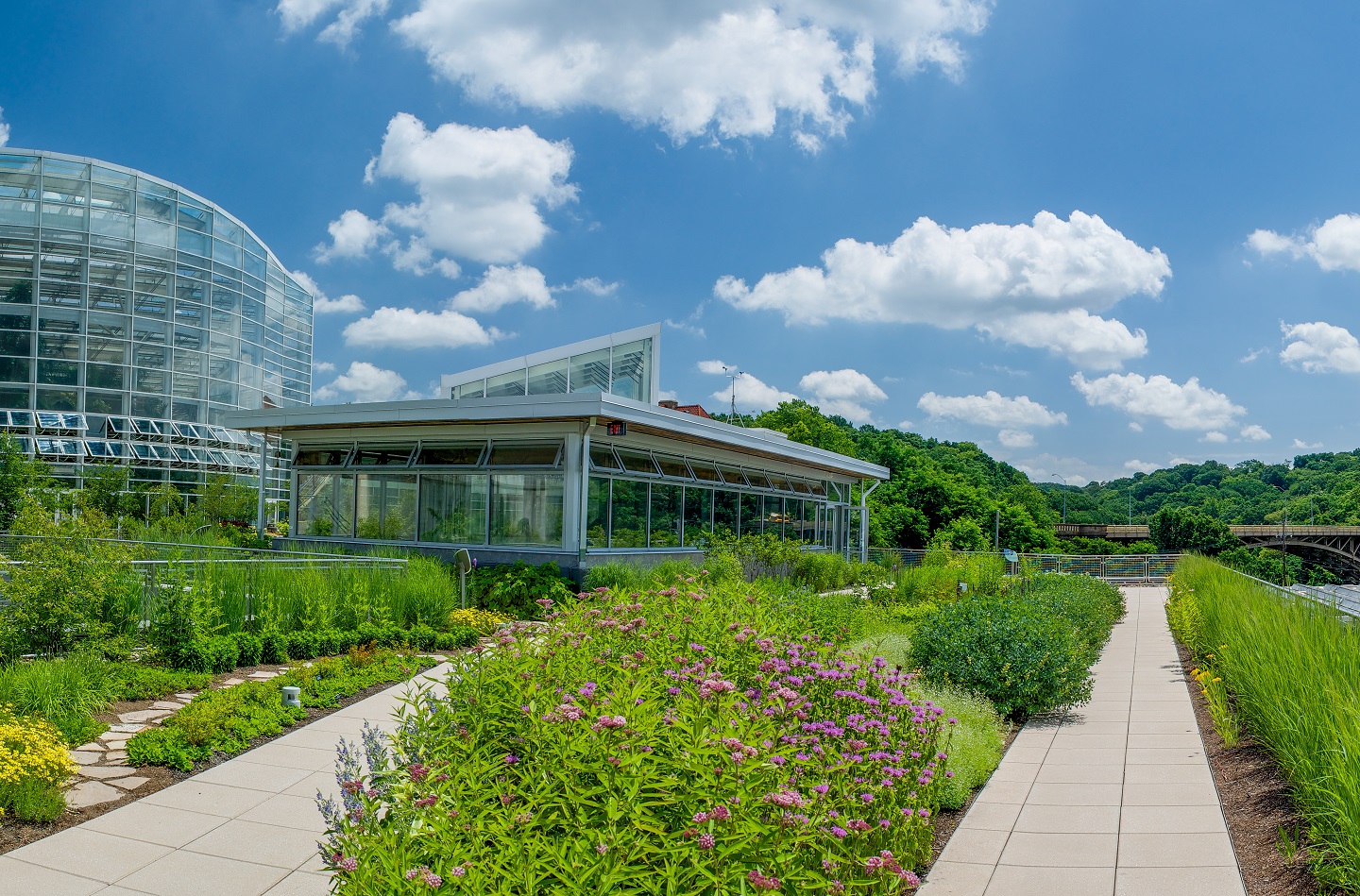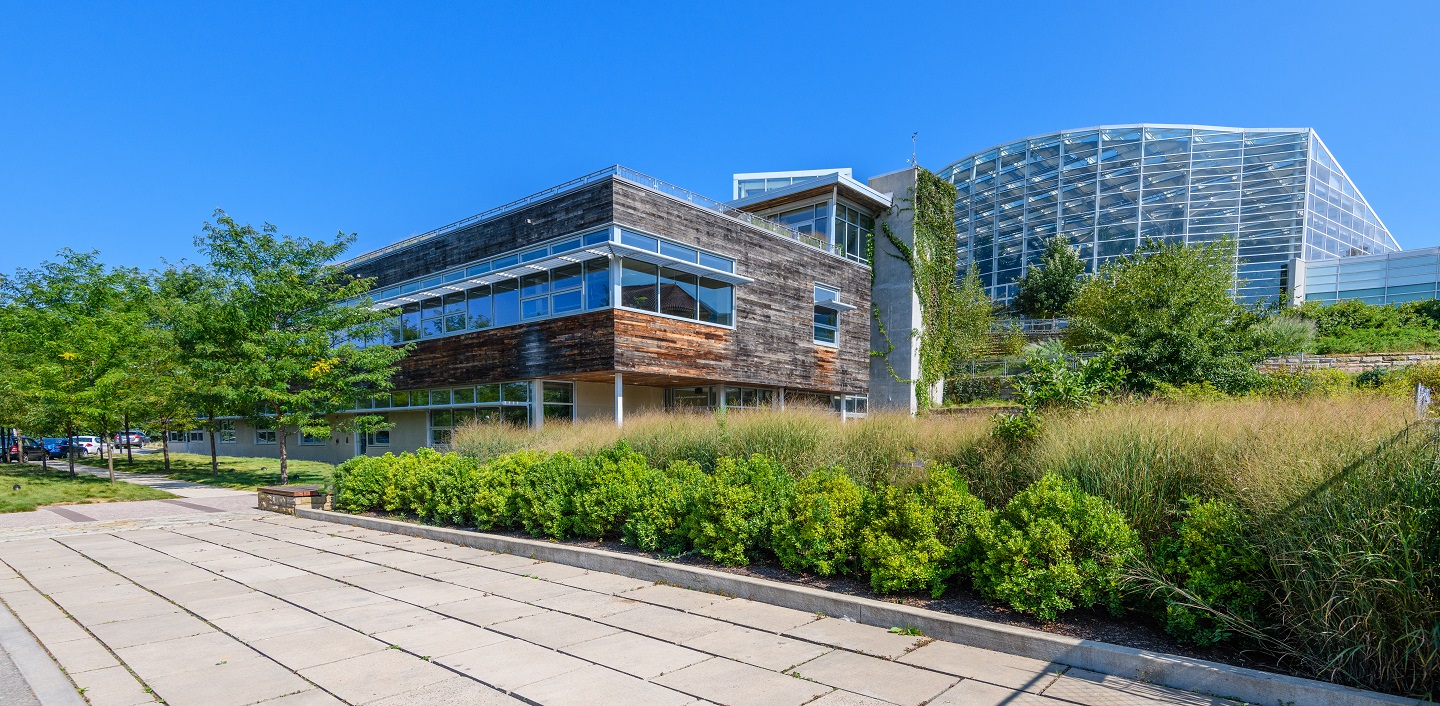Project Details
- Scheme & Version: USA In-Use 2016 Part 2 – Management Performance
- Location: Pittsburgh, Pennsylvania, USA
- Size: 24,350 square-foot
- Score & Rating: 93.3% Outstanding
- Certificate Number: BIU00002465-1.1
Project Team
- Developer/ Client: Phipps Conservatory and Botanical Gardens
- NSO: BRE Global – BREEAM USA
- Assessor/ Auditor: Ensight Consulting
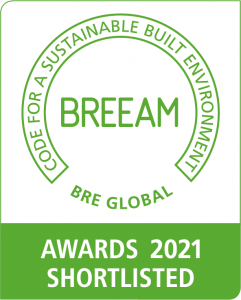
About the Project
The Center for Sustainable Landscapes (CSL) is a 24,350-square-foot education, research and administration facility at Phipps Conservatory and Botanical Gardens (Phipps), a public garden attraction in Pittsburgh, Pennsylvania, USA. Designed and built to generate all of its own energy while treating and reusing all water captured on site, the CSL is the first facility in the world to meet four of the world’s highest green construction standards — The Living Building Challenge, WELL Building Platinum, SITES Platinum and LEED® Platinum — and now adds the distinctive BREEAM Outstanding In-Use rating to its resume.
The core function of the CSL is to increase awareness of the interconnection between the natural and built environment, and the efficacy of sustainable systems for Phipps, a 127-year-old institution that receives over 500,000 visitors annually. By employing a design that invites exploration while seamlessly integrating with the guest experience, the CSL is uniquely positioned to showcase renewable energy technologies, conservation strategies, water treatment systems and sustainable landscaping to a broad audience, including many who are engaging with these topics for the first time.
“Ensight Consulting was honored to assess this landmark building. From its inception, Phipps’ Center for Sustainable Landscapes (CSL) has been a guiding light in the green-building community. And now, driven by Phipps’ sterling management team, the CSL enters the next phase of leadership as an exceptional example of responsible facility operations.”
– Julia Craighill, Founder Ensight Consulting (Assessor)
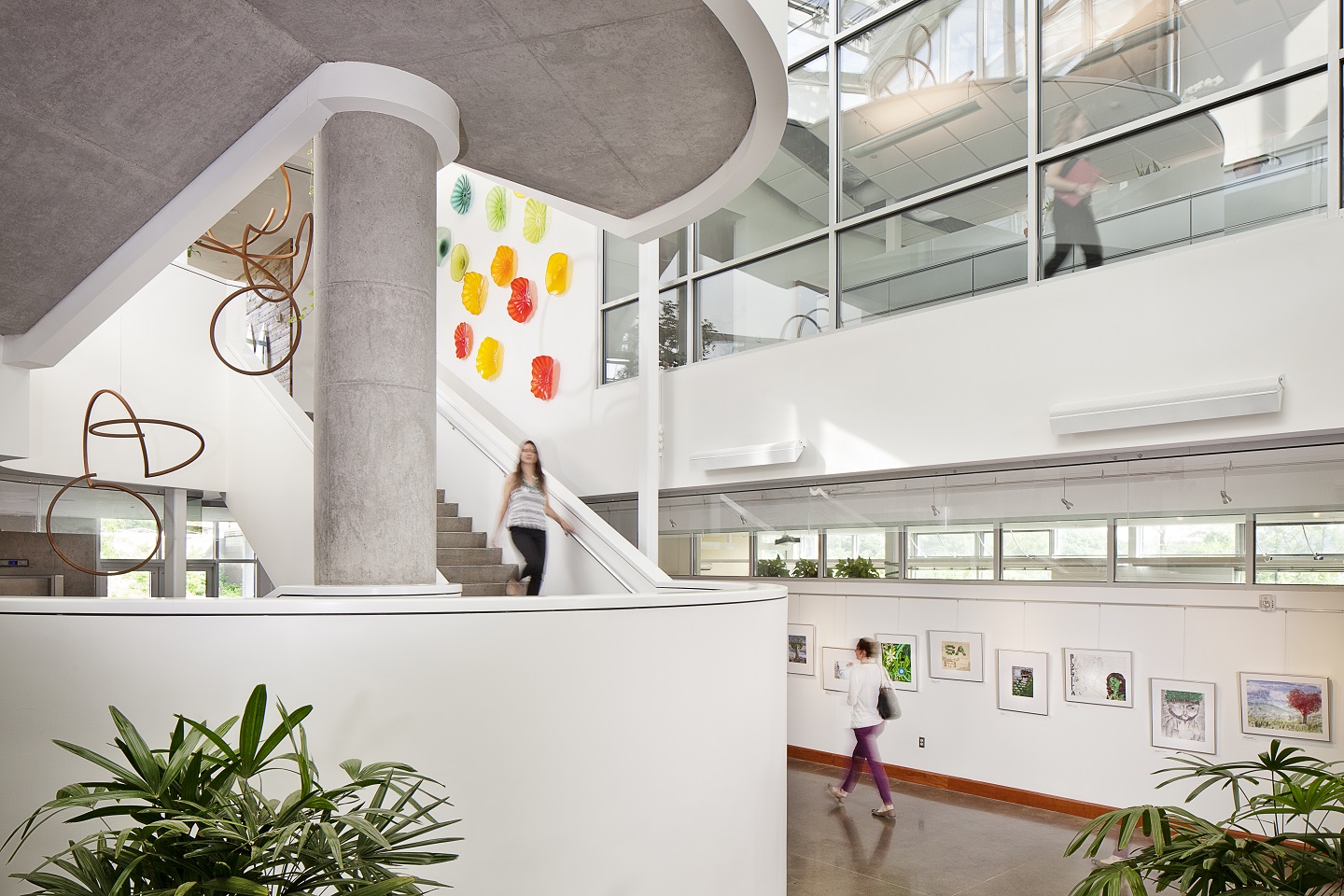
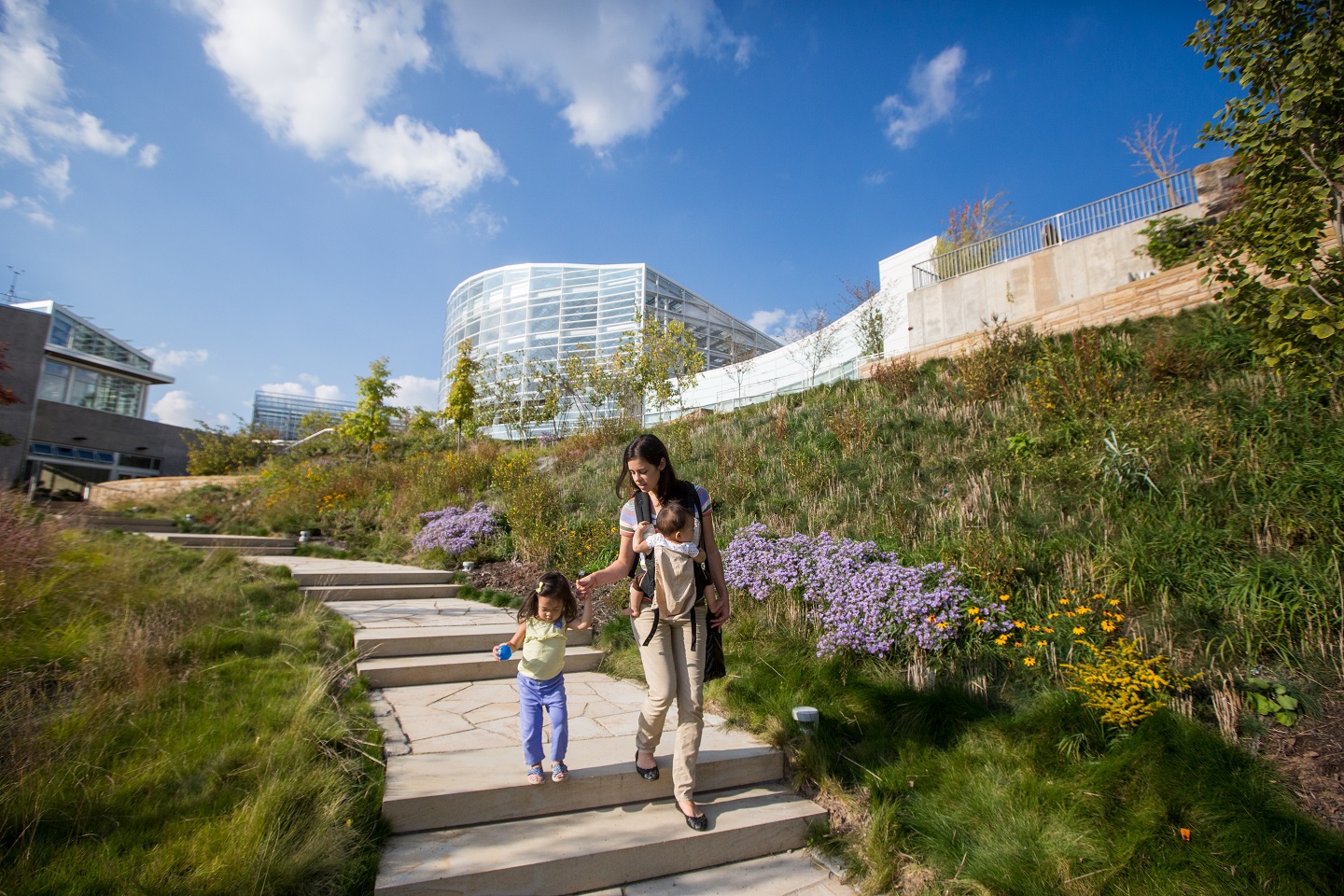
“3R Sustainability believes in the powerful impact existing buildings can have on the environment and the health of the people inside the building. 3R is honored to be a part of this incredible achievement. The Phipps Center for Sustainable Landscapes (CSL) is an exceptional example of what can be achieved when a building is not only designed with high performance in mind, but is held to the highest standard for building operations.”
– Jana Lake, President 3R Sustainability (Consultant)
Environmental Challenges
In support of the CSL’s lofty green goals, BREEAM In-Use is helping us overcome the challenges of maintaining performance, specifically with knowledge gaps and institutional knowledge.

Knowledge Gaps and Educational Opportunities
BREEAM In-Use provides opportunities to educate and to bring people to the table. Phipps’ pursuit of certifications, including BREEAM In-Use, provides opportunities for us to knowledgeably speak with a range of professionals to explain not only what we are doing but also why we’re doing it. In doing so, we are shoring up knowledge of and support for these types of projects. It also promotes understanding and fosters a sense of ownership, particularly for the management staff.
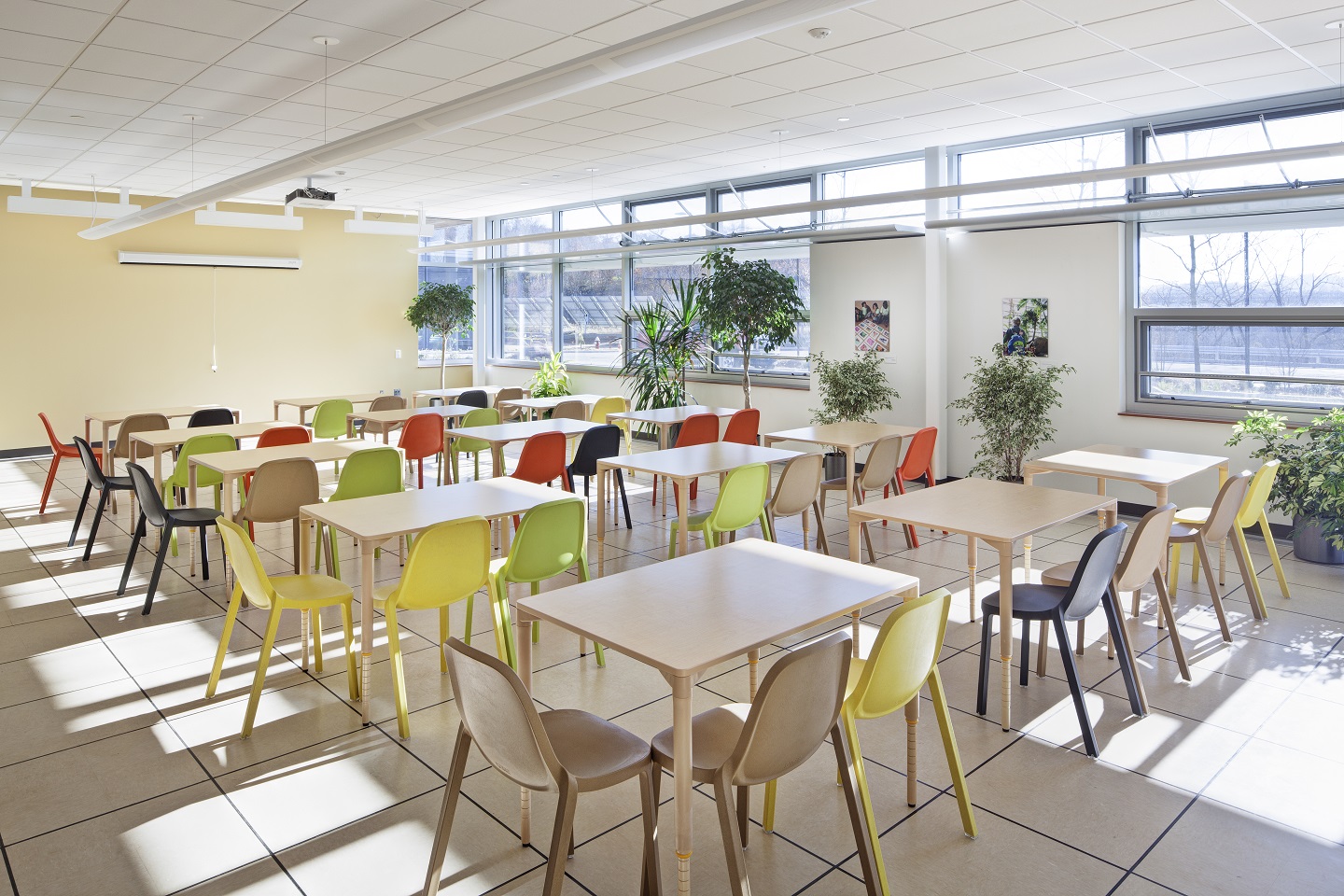
Staff Continuity and Institutional Knowledge
In any organization, there is a very real possibility of staff turnover. When that happens, there is the danger that your team may lose specialized knowledge of your building. Indeed, a key team member transitioned from Phipps soon after we completed the certification process. However, as required for documentation, preparing standard operating procedures was well worth the effort and helped us retain years of institutional knowledge about our building’s particulars.
“A management-focused certification like BREEAM In-Use presents opportunities to further your commitment to your lofty green goals and ensure ongoing success in managing building sustainability performance. Maintaining sustainability performance presents its share of challenges, but even these present opportunities for success.”
– Meghan Scanlon, Phipps Wellness and Sustainability Specialist
Land Use: Score – 100%
- Phipps has a dedicated Facilities Team that manages and maintains the entire campus in a sustainable manner
- Sustainable operations and maintenance plan and policies are in place to support the Team
- In line with Phipps mission, Phipps performed environmental assessments which resulted in extensive remediation, and created a biodiversity action plan that informed the design and construction process and will regenerate the site over time
Materials: Score – 90%
- Phipps pays special attention to specifying and purchasing products and materials that are robust, contain minimal amounts of embodied energy and water, are circular (Cradle to Cradle), and contain no Red List chemicals, all to promote a healthy environment, interior and exterior, and increase occupant health and productivity
- Natural hazard management was considered (e.g., wildfire, landslides, etc.)
Energy: Score – 96.67%
- Phipps is dedicated to energy conservation; the CSL was designed with efficient wall (thermal boundary), glazing and ventilation systems, is a Net Zero Energy Building, maintains a robust Building Automation System, and sub-meters energy so the Facilities Team can analyse data and address issues as they arise
Water: Score – 96.15%
- Phipps is dedicated to water conservation; the CSL is a Net Zero Water Building, maintains a robust Building Automation System, maintains an innovative water reclamation system, and sub-meters water so the Facilities Team can analyse data and address issues as they arise
- The innovative water reclamation system depends, somewhat, on stormwater collection. Between 50 – 75% of the CSL’s water consumption is from alternative sources. In a wetter year, the percentage may be closer to 100%.
Health and Wellbeing: Score – 94.59%
- Phipps is dedicated to wellness, occupant health and productivity, and environmental health.
- Daylighting, glare protection, personal thermal and ventilation controls, attention to IAQ, and the wellness program are particularly well designed and maintained.
Benefits of BREEAM
BREEAM In-Use gave us the ability to maintain building management success by confirming design strategies and ongoing values alignment.
BREEAM can Confirm Design Strategies
The CSL’s original green goals, including net-zero water and energy consumption, had never before been accomplished in one project. Our pursuit of BREEAM In-Use allowed us to confirm that our design worked and the project’s original lofty green goals were still being met. The ongoing reporting required by BREEAM In-Use will help us demonstrate that we continue to meet our goals.
Indeed, thanks to an energy use intensity (EUI) of 18, which is 73.8% less than the EUI of a typical office building, the CSL generated 133,301 kWh while using only 129,876 kWh in its last year of operation. On-site solar and wind generation provides the electricity to power the facility. Compared with a conventional office building of the same size, the cost of operating the CSL over the next 30 years will save Phipps $3 million in energy costs alone. Similarly, a typical office building using the CSL’s amount of potable water will cost more than $140,000 over the next 30 years on water usage and treatment. That cost simply does not exist in the CSL.
Additional technologies and strategies employed in the CSL include, but are not limited to, photovoltaic arrays, a vertical axis wind turbine, geothermal wells, a rooftop energy recovery unit, a green roof, a desiccant dehumidification system, a direct digital control building management system with interactive touchscreen user interface, a solar-powered water distillation system, phase-change materials, mechanical windows, a rainwater harvesting system, a lagoon and constructed wetlands, rain gardens and permeable paving – all operating together within a single site. Operational strategies – from a high-performance building envelope to maximized daylight autonomy – that help Phipps meet its net-zero energy and net-zero water goals are also on display.

BREEAM can Confirm Ongoing Values Alignment
Phipps is passionate about doing our part to address climate change. Certification helps us walk the talk, compelling us to think of the future when drafting plans and policies with improvement targets and environmental and operational resilience in mind. It also provides an opportunity for us to confirm that our management strategies and operational practices are, in fact, aligned with our values.
“At Phipps, we believe that public gardens have a role to play in mitigating the challenge of climate change, and we believe the answer lies in regenerative thinking that extends to our buildings, programs and operations. BREEAM In-Use is an essential milestone in this effort, as it demonstrates the results of that transformation, and the value of changing the way we see the world.”
– Richard Piacentini, Phipps President and CEO
Benefits of BREEAM In-Use Certification
For Phipps, BREEAM In-Use certification is an important tool:
- Accountability
- Benchmarking
- Inspiration
- Education
It helps provide accountability
In building management, you will inevitably run into challenges. When that occurs, if you do not have a formal certification to maintain, any unofficial strategies can easily be forgotten. Having the accountability of ongoing performance monitoring and verification helps us persevere as we face challenging management situations.
It helps us baseline our current performance and memorialize our commitment to evolution
With both benchmarking and improvement pathways, BREEAM In-Use allows us to gauge our existing performance as well as structure ideas for future projects to ensure continued achievement of our green goals. As we continue with new research and best practices, we will use BREEAM In-Use as a testing opportunity to ensure that the values we originally prioritized are still important and in practice. And we will use the certification as a roadmap of new challenges for us to consider pursuing over time.
It provides positioning that keeps our project on the forefront of industry best practices
The CSL also allows Phipps to leverage its leadership in certification achievement by introducing professionals, educators and the public to the inner workings of a sustainable facility. The CSL is designed to maximize interactivity through the sheer number of technologies and operational strategies on display. Seeing these technologies and strategies at work also showcases their potential replicability, with a goal of inspiring similar projects at the home, business and community levels.
It reinforces our educational mission
In addition, Phipps hosts a Sustainable Training Workshop program to give professionals a background on best practices and benefits of building green, and a free online Green Building Toolkit Series details the process behind Phipps’ green projects. The CSL’s dedicated classroom spaces give children a chance to connect to nature, instilling a sense of wonder and fostering the growth of tomorrow’s environmental stewards. The CSL is also a site of continued building performance research, in partnership with local universities Carnegie Mellon and the University of Pittsburgh, aimed at transforming the way that people relate to nature.
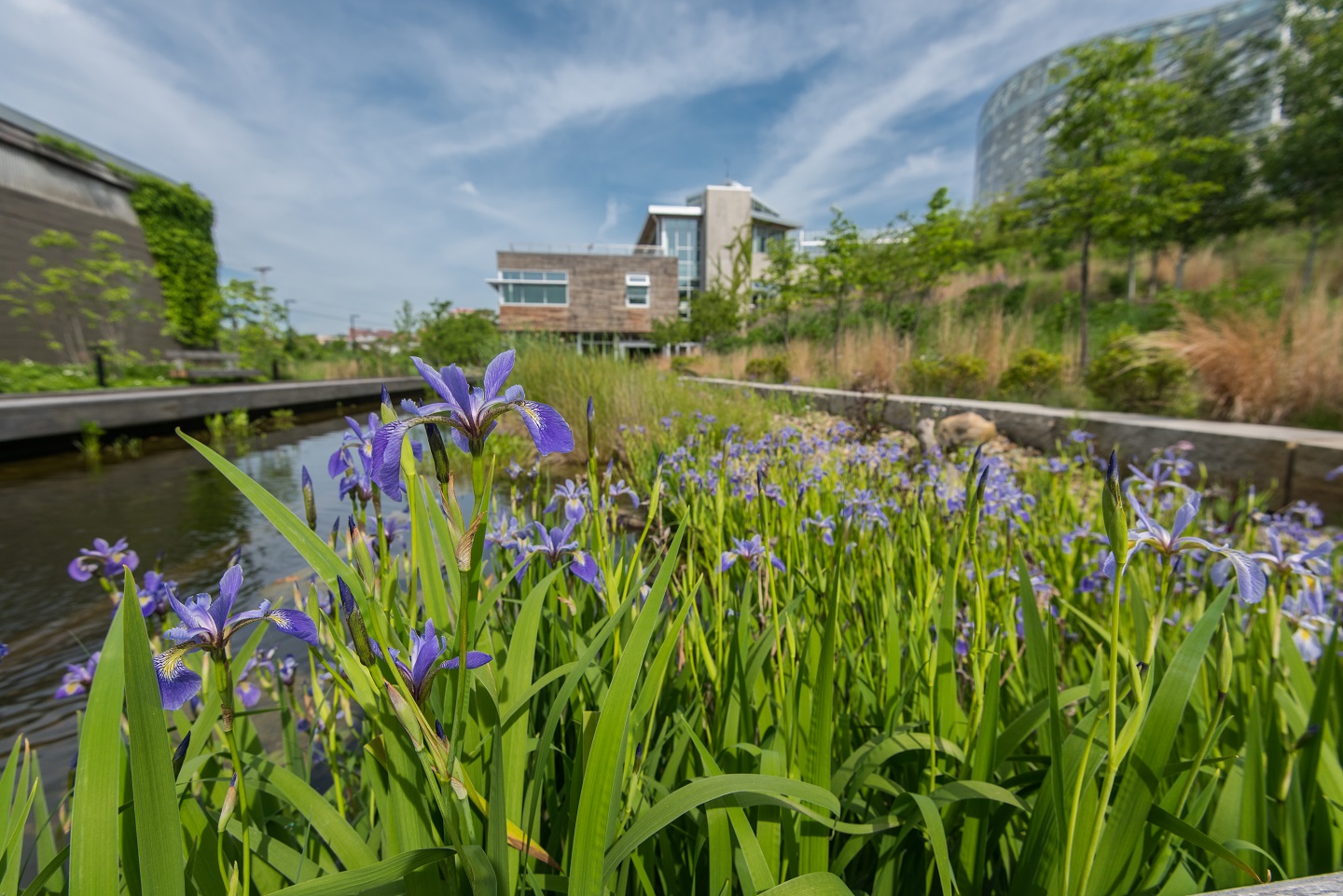
“In order to lead on sustainability, locally and globally, we need to set an example. Our work proves its true value when others meet and exceed that example. Certifications like BREAAM In-Use lend authority to our voice and help interpret our work to the world.”
– Richard Piacentini, Phipps President and CEO
Outcomes, Achievements & Awards
In addition to BREEAM Outstanding In-Use, the Center for Sustainable Landscapes has achieved four of the highest green building standards — The Living Building Challenge, WELL Building Platinum, SITES Platinum and LEED® Platinum. The project and organization have also received accolades from dozens of additional professional bodies, including the National Institute of Building Sciences, the American Institute of Architects, the Regenerative Business Summit, the Urban Green Council, the Forest Stewardship Council, Skål International and the European Center for Architecture Art Design and Urban Studies.
While the CSL was not designed with a goal of meeting the BREEAM standard, the achievement of the Outstanding In-Use rating demonstrates that the building operates as if it were. This exciting new distinction proves the value of utilizing certification standards in tandem for a holistic approach to building performance assessment while connecting Phipps to a larger international audience of green building professionals.
“At Phipps, we are increasingly finding ourselves on an international stage when sharing our experience with the Center for Sustainable Landscapes,” says Phipps President and CEO Richard Piacentini. “The addition of a BREEAM rating helps us to communicate the value of green building to new audiences while placing us in the company of some of the world’s most innovative sustainable building projects.”
